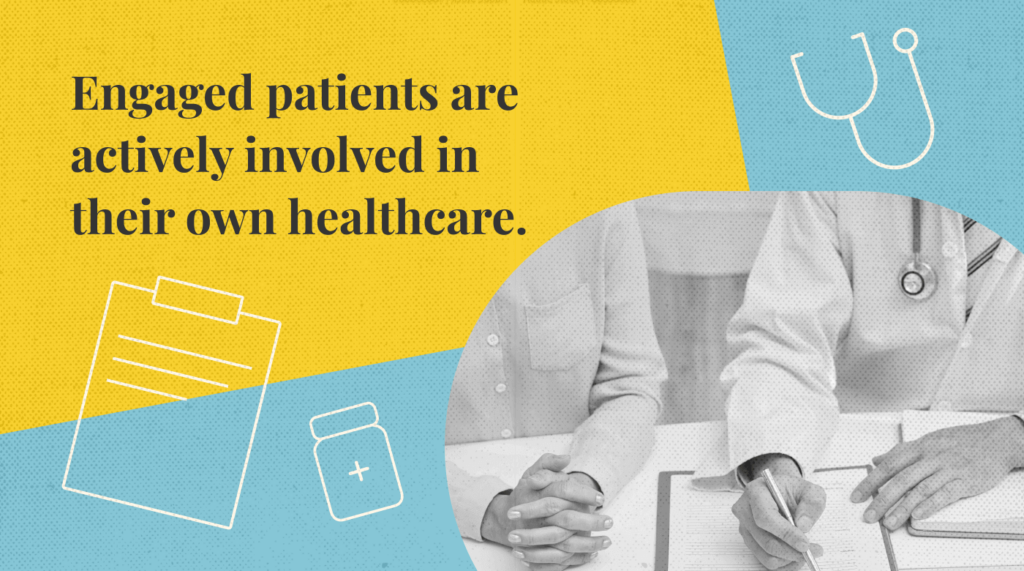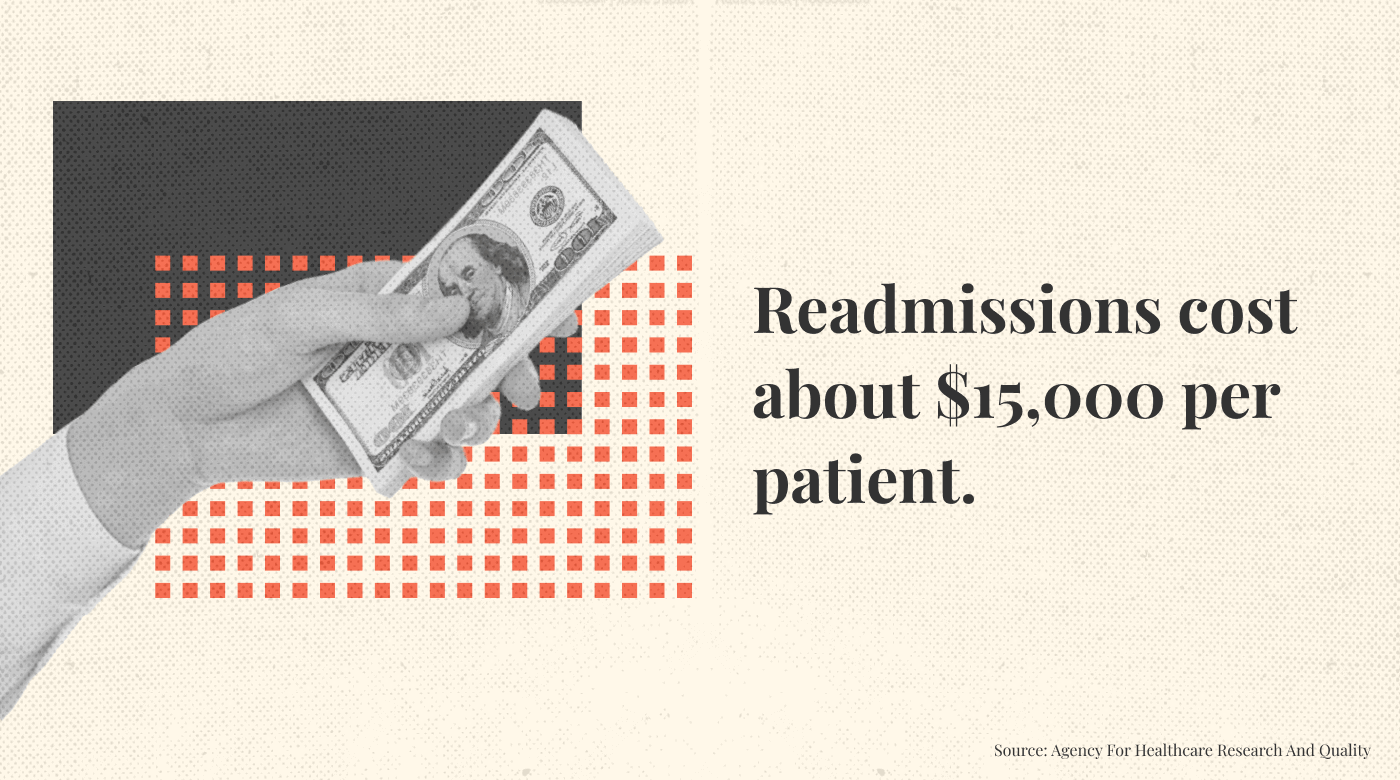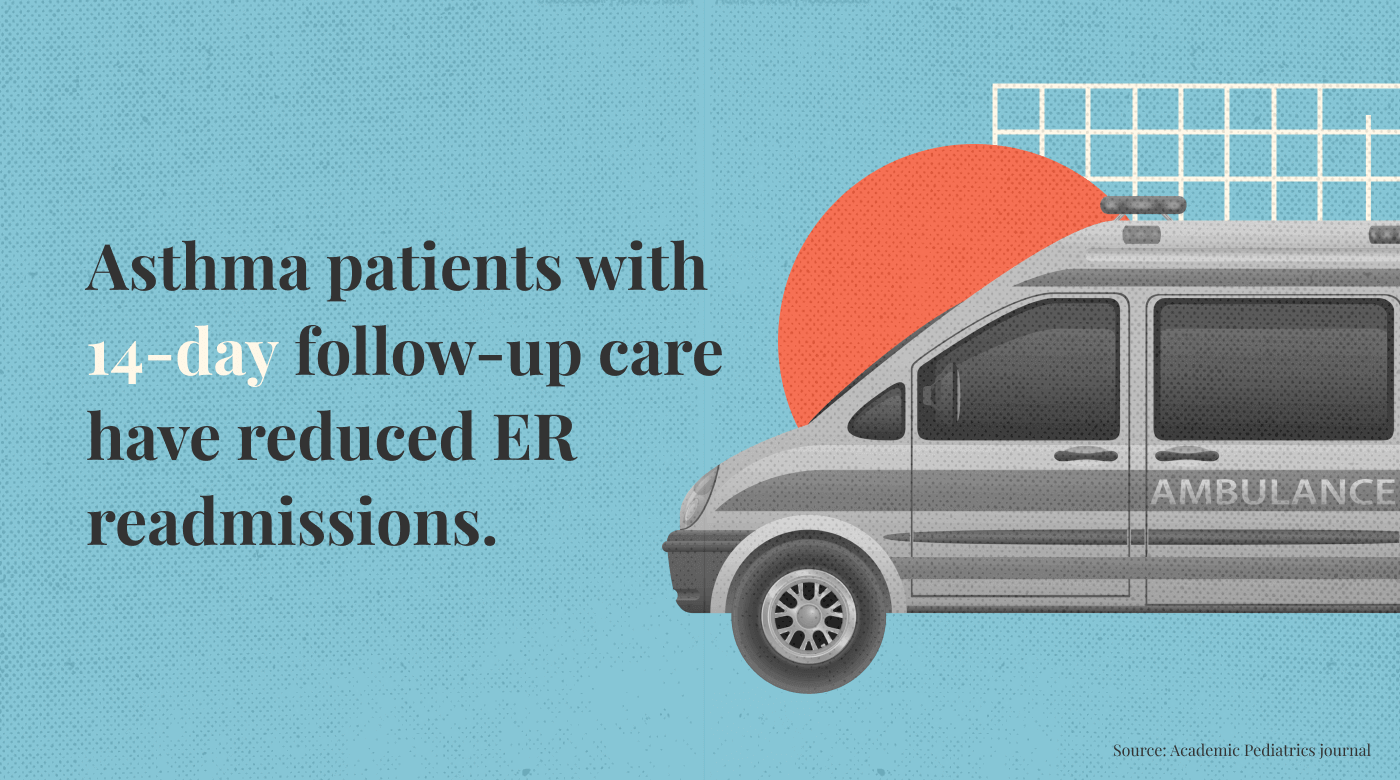A patient didn’t follow through with aftercare instructions and ended up with more symptom issues. Again.
While leaving the waiting room, a staff member overhears a patient complaining that no one asked her opinion of possible treatments for her condition.
If you’ve seen these scenarios in your practice, it may be time to focus on patient engagement strategies.
This post will address the differences between patient engagement and patient activation and why they both are important. It will also provide you with the top strategies to improve engagement and help ensure better patient outcomes in independent clinics.
Read on to see how you can start implementing these strategies today.
What Is Patient Engagement?
Patient engagement refers to how involved a patient is with their own healthcare.

Engaged patients participate in healthcare by working with their providers to understand their conditions. They want to know their prognosis, symptoms, medication side effects, and treatment options.
With this knowledge, they can participate in making decisions, seek further information, and better manage their health.
Patient Engagement vs. Patient Activation
Patient engagement and activation are two terms that are often used interchangeably. However, they’re not the same thing. The former refers to a patient’s involvement in their own health, in general.
Patient activation, on the other hand, refers to a measure of how able, knowledgeable, and willing a patient is when it comes to supporting their well-being.
You can use tools to measure patient activation, such as the Patient Activation Measure® (PAM). PAM is a questionnaire developed to help providers identify how activated a patient is.
For example, a Level One patient is described as overwhelmed by their options and unable to participate effectively. A Level Four patient, however, demonstrates high levels of confidence and competence in the healthcare process.
Activated patients are known to:
- Independently manage their illnesses, conditions, or symptoms.
- Engage in activities that minimize their symptoms, slow a decline in function, and maintain their current levels. For example, an activated patient will take prescribed medication, adjust their diet, or complete recommended exercises consistently.
- Participate in the decision-making process with providers. An activated patient will ask questions about their diagnosis, medication, and treatment options.
- Collaborate with other providers and specialists as needed. Activated patients may request a second opinion or research additional treatment options.
- Select a provider, healthcare organization, and specialists through research, word of mouth, and experience.
- Navigate the healthcare system they belong to and determine the insurance ramifications. An activated patient will identify which providers are in their network and determine the projected costs.
Patients who are activated show more positive engagement overall. Understanding how activated and engaged your patients are will help guide your healthcare decisions.
Let’s check out the benefits of patient engagement so that you see how it works together with activation.
Benefits of Patient Engagement
Increases in patient engagement help the patient, the provider, and the healthcare industry as a whole.
- Engaged patients demonstrate improved health outcomes. They better manage their symptoms or condition. They stay in contact with their providers regarding changes in their symptoms, medication side effects, and any other new concerns.
Staying on top of their condition means fewer visits to the emergency room and urgent care. One way to promote this type of engagement is through a mobile app—one study found that patients who used a mobile app to engage in their care proactively had fewer return ER visits.
- Since engaged patients don’t revisit the ER or urgent care as frequently, they lower healthcare costs. Patients who return to the ER within 30 days of their visit demonstrate an average readmission cost of $15,000.

The ramifications of medication nonadherence are staggering. Patients who don’t successfully manage their medications cost the healthcare industry about $300 billion per year.
Patients who don’t take prescribed medications may suffer the consequences, too. Mismanaging blood pressure medication, for example, leads to a higher risk of stroke and cardiac disease. These chronic conditions may land patients in hospitals and other care facilities in the long term.
- Patients who are engaged with their own health demonstrate greater satisfaction with their healthcare in general. They tend to stay involved in their healthcare-related decisions, follow recommendations, and manage their conditions more independently.
Satisfied patients tend to stick around, which is why using strategies to keep patients satisfied is critical for profitability. Patient retention remains a cause of concern in the healthcare industry, with an average churn rate of 48%.
- Engaged patients experience an improved quality of care. Actively working with their providers to manage their conditions leads to better symptom management and treatment provisions. Also, doctors who are informed about their patients’ current needs are able to offer them better support and recommendations.
In one study, patients admitted to the ER for asthma-related conditions were tracked for their readmittance potential. Those who attended 14-day follow-up appointments with their provider were less likely to return to the ER.

Engaged patients also demonstrate a higher sense of well-being and confidence in monitoring their conditions and managing their illnesses.
With these benefits in mind, let’s look at the best strategies for enhancing engagement.
Strategies for Boosting Patient Engagement
Improving patient engagement comes down to five core approaches:
- Providing an exceptional patient experience
- Offering top-notch education
- Ensuring a shared decision-making (SDM) process
- Offering various communication options
- Providing continuous, quality care
I discuss each of these approaches below, along with specific strategies to implement for each one. At the end, you’ll have 20 strategies you can start using now to increase patient engagement.
Approach #1: Deliver an Exceptional Patient Experience
Consider how your practice will provide patients with an excellent overall experience. Here are some tips and strategies that can help you improve the experience for patients:
1. Make a Positive First Impression
A patient’s impression of your practice starts the moment they reach out. About 75% of prospective patients head online to start searching for a doctor or medical information. Ensure the information on your website is clear to read and easy to navigate.
Don’t forget the small details. Patients should be greeted upon their arrival at your clinic, and the staff members involved in their care should introduce themselves. Expectations for the visit should be clearly stated to ensure each patient’s understanding.
Providers should take extra time to establish rapport by getting to know more about their patients’ medical concerns.
2. Consider Patient Culture
Cultural considerations need to be considered during office visits.

One in five people currently living in the U.S. speak a language other than English in their home, so the odds that you’ll come across patients who speak limited English are high.
If you are not multilingual, ensure that your practice has translation services available and that your patients can access them.
Provide HIPPA regulations and written resource materials in multiple languages.
Educate yourself regarding fundamental cultural differences, especially for the populations you are likely to serve. Nuances in nonverbal language, including eye contact and proximity, may affect how your patients perceive you and their level of care.
For example, eye contact is encouraged in Western culture, as it demonstrates high engagement and interest. This is not true for some other cultures, in which prolonged or direct eye contact may be viewed as disrespectful.
3. Take Age Into Account
Age distinctions go hand in hand with cultural considerations.
Some providers view elderly patients as harder to care for. And indeed, older patients may have more complex medical needs and cognitive issues impacting their ability to participate in their medical care.
Some elderly patients struggle to understand smart technology devices and how these tools can help them with their healthcare needs.
Encourage patients to take an active role in their healthcare by understanding their primary concerns, providing support for technology, and getting patients’ wishes in writing.
Pediatric patients also need to know the impact of their primary caregiver on the decision-making related to their healthcare options.
4. Communicate Clearly
Effective communication is essential for an excellent patient experience. To best utilize this strategy, account for all verbal, nonverbal, and written communication.
Employ techniques for active listening during office visits, including asking clarifying questions and restating information.
Encourage participation from patients, caregivers, family, and other members of a patient’s support system. Keep an eye on their body language, facial expressions, and gestures. If their nonverbal cues aren’t consistent with their words, check in with them.
Ensure all written communication is clearly stated, and define medical jargon when applicable.
Take the time to gather feedback, too. Give your patients the opportunity to complete surveys, forms, and comment cards either online or in the office space.
Engaged patients will feel as though they can approach the practice and their providers at any time with questions or concerns and know they will be heard.
Approach #2: Provide a Top-Notch Education Program
Quality education programs include more than providing diagnoses and treatment plans. A strong plan also includes how you present the information, what types of information your patient population needs, and a means to check patients’ understanding.
5. Start with the Diagnosis
The diagnosis is often the beginning of the healthcare journey.
Use the PAM® to determine how patients’ thoughts, feelings, and ideas will inform their engagement moving forward. Meeting patients at their level helps ensure they understand their conditions, symptoms, treatment options, and treatment durations.
If patients are engaged and activated, provide them with additional resources for support and information. If they aren’t demonstrating engagement, use data from PAM® to guide your next steps.
6. Know Your Audience
Your patient population will also drive your decisions about how to present information.
About 48% of adults aged 16–65 demonstrate low literacy levels.
Where you practice may have an impact, too, as literacy rates vary by state.
To reach the majority of your audience:
- Ensure your written materials are understandable to the average middle school student.
- Supplement written reports and recommendations with vivid illustrations, graphics, and charts.
- Verbally explain medical terms in easy-to-understand language—and include examples.
It’s not enough to hand out information; you also need to ensure your patients understand it.
7. Ensure Patients’ Understanding
If you practice active listening, you have built-in opportunities to clarify patients’ understanding. For example, repeat the patient’s question or confirm verbatim with them to be sure you are on the same page. Be sure to ask the right questions and assess their concerns and needs based on their responses.
Plan for the office to follow up with the patient after the visit. Does the patient have any questions or concerns about their care? Do they need help remembering or understanding the recommendations? Are they having difficulty accessing their medication or recommended services?
Encourage patient engagement by ensuring their understanding of—and subsequent adherence to—their care plan.
8. Make Resources Available
Information should be presented in a variety of ways and in numerous formats for patients to consume.

For instance, you can present information via the following:
- YouTube videos, patient portals, research articles, or blog posts
- Newsletters, including email and print versions
- Brochures
- Direct mailers
- Support groups
- Classes, including in-person, video conferencing, and webinars
The more you can repeat the information, the better.
For example, let’s say a patient is given two options for undergoing a surgical procedure. The provider explains each one using an anatomical model or diagram.
The patient is then sent home with both a picture and a written explanation of each procedure. Later, they receive an email or text with links to further written, audio, or video explanations or a direct mailer with the same procedural information and a research article. This level of information will ensure the patient has the information they need to stay engaged.
Approach #3: Involve the Patient in SDM
Shared decision-making is exactly as it sounds—providers and patients work together to make informed decisions about symptom mitigation and treatment plans.
SDM often leads to lower costs, as patients engaged in it have less frequent ER and urgent care visits. Being active in their healthcare-related decisions tends to increase their willingness to engage in preventive care measures.
Encourage increased patient engagement by identifying your talking points, asking questions to understand your patients’ perspectives, and collaborating on solutions.
9. Identify Your Talking Points
Start with the key details. What should patients be able to understand in order to make an informed decision?
Remember your population. To present information clearly, offer visuals such as charts, diagrams, and infographics.
As you move through each point, note the patient’s verbal response and nonverbal responses. In Western culture, if they avoid eye contact or start fidgeting, this may be a sign they are not in agreement with you.
10. Seek to Understand
Many factors drive a patient’s perspective and feelings about possible plans and treatment options. Ensure you understand their values and what those values mean for their healthcare decisions.
Consider the impact of culture, religion, family, and emotions.
Check on your patient’s assumptions and fears. Are negative perceptions and feelings driving their decisions? If so, then they might benefit from additional education or resources.
11. Collaborate and Consult
Encourage your patients to collaborate, both in your practice and beyond. Facilitate their communication with specialists or other departments.
Depending on each patient’s wishes, solicit input from care providers and family members. While these individuals might disagree with the patient’s ultimate decision, you will be better informed as to the level of support the patient may need moving forward.
To make the most of SDM, determine how each patient prefers to communicate.
Approach #4: Enable Their Preferred Communication Methods
Patients have a variety of communication methods to choose from. Some may have a definite preference, while others seek multiple ways to stay in touch.
12. Find Out Their Preference
One of the best strategies for encouraging patient engagement is to determine how patients prefer to communicate. Some will want the personal touch of a phone call, while others opt for the ease of responding to an email on their own time.
Don’t underestimate the power of texting, either. Most text messages are read within three minutes of receipt—if not responded to.

Keep track of your patients’ communication preferences by listing them in your CRM or another patient management tool.
13. Offer Telehealth
The emergence of telehealth is another excellent means to encourage patient engagement.
A patient portal that offers a variety of services encourages patients to schedule appointments, send messages, pay bills, and access their electronic health records.
Patients are accessing portals with increasing frequency, too. More than 3 in 4 older adults report having access to a portal. Of these, 57% report feeling confident in using one.
The ease of completing these tasks on their own time without having to stop by the office or pick up the phone encourages many patients to make an effort.
14. Suggest Tools They Could Use
As 97% of people own mobile phones, boosting their engagement through their devices makes sense.
Smartwatches for personal wellness management are also becoming increasingly popular, as users are able to track their heart rate and other metrics in real time—and 42% of them reportedly share their findings with their medical providers.
Additionally, patients with smart inhalers report taking their prescribed preventative doses more consistently.
Smart glucose monitors can be paired with a mobile phone or smartwatch to give users their blood sugar readings.
Patients can even track their mental health through apps that offer a mix of self-reporting features for their mood and emotional state, along with real-time heart rate, temperature, and blood pressure readings.
Not only do patients have a number of devices at their disposal, but there are numerous software options, too.
15. Engage with the Right Software
Patient engagement software is another great tool. You can start by determining the data your practice needs.
You may want to gather patient feedback to drive improvements and adjustments. Or maybe you’re focused on getting your patients more engaged by providing scheduling tools and a more streamlined patient billing experience. On the other hand, software concentrating on specific areas, such as chronic disease management, might best suit your needs.
Remote patient monitoring is yet another option.
Research different options for streamlining the patient experience to determine the best ones for your practice.
Now it’s time to put everything together with strategies for the fifth approach to improving patient engagement.
Approach #5: Offer the Continuum of High-Quality Care
Patient engagement increases with an excellent experience, a quality educational program, a solid SDM process, and a robust communication system.
Now you need to make sure these approaches are maintained throughout the care continuum.
Here are some ways to provide continuity of care before, during, and after patient visits.
16. Before Care
Engage your patients as soon as they reach out to your office to schedule an appointment. Make it easy for them to confirm or reschedule their appointments through a responsive phone system, email account, or website.
Send appointment reminders through text, email, and voicemail. Allow patients to opt-in for reminders mailed directly to them, too.
Send intake forms and questionnaires through links to your patient portal, but allow for paper copies if you expect patients will be more likely to complete them that way.
17. During Care
Establish rapport with your patients from the start. Patients who develop trust in their providers are more likely to ask questions, raise concerns, and follow through with recommendations.
Employ empathetic listening strategies so that patients feel heard and understood during their appointments.
Encourage SDM during discussions regarding conditions, symptoms, and treatment options. Support your verbal recommendations with visuals or written information the patient can take home.
Learn each patient’s culture and how it might impact their perspectives of their care. Avoid making assumptions by asking questions and clarifying their intent.
18. After Care
Check in with your patients after the visit to see how they’re doing.
Are they taking their newly prescribed medications? Have any side effects cropped up? Are they managing their symptoms according to their care plan? Are they tracking their metrics or noticing changes?
For post-surgical or procedural patients, ensure the patient has a follow-up appointment in the books before they leave the hospital or clinic. Call, text, or email them reminders of their appointment and its importance.
Set up your system to make these follow-ups routine in your practice. Patients notice—and appreciate—when their providers check in with them.
19. Address Barriers
Another way to improve patient engagement is by identifying and addressing potential barriers to your patients’ healthcare.
Understanding the Social Drivers of Health (SDOH) is an excellent place to start.

The World Health Organization defines SDOH as any non-medical factors that could influence a patient’s overall outcome.
SDOH factors include the following:
- Socioeconomic status, income, and employment
- Housing safety and stability
- Continuous and stable access to food
- Education level
- Social opportunities and resources
- Access to healthcare, including transportation and affordable medication
About 23% of physicians report that their patients are affected by at least one SDOH. And the impact of SDOH on your patients cannot be ignored, as they contribute to 30 to 55% of health outcomes.
In a U.S. Department of Agriculture report, 10.2% of households experience some level of food insecurity. Another 10.2% have low to very low food security.
Prescriptions are often an issue, too. About 20% of elderly adults report having difficulty following through with medication recommendations because they can’t afford the prescriptions.
Identify which SDOHs affect your patients to determine how you can help reduce these barriers.
20. Check-ins
Check-ins are the little things your practice can implement to keep your patients engaged.
Send out appointment reminders, whether to encourage them to schedule their annual visit or inform them about an upcoming appointment.
Email or text your patients with birthday wishes. Send notes of congratulations when they achieve milestones in their health goals.
Provide patient surveys following an appointment and at random intervals throughout the year. Encourage patients to participate by entering them into a draw for a gift card. Take time to thank them and acknowledge their participation by following up with individual concerns by phone or email.
Taking time to do the little things will go a long way toward keeping each patient engaged with their health and your practice.
Ready to Take Patient Engagement to the Next Level?
Patient engagement strategies have a substantial impact on healthy patient outcomes. While implementing them may take time and effort, the results will be well worth it.
Start with one of the strategies listed.
Decide as a team how you can improve the overall patient experience by focusing on rapport-building and cultural considerations.
Discuss how you can provide educational resources to your patients in the formats and languages they prefer.
Once you’ve established one strategy, move on to the next.
Better patient outcomes are within reach. Subscribe to The Medical Practice newsletter today to get the latest tips and trends.



